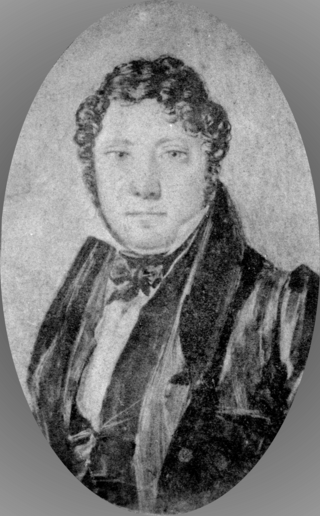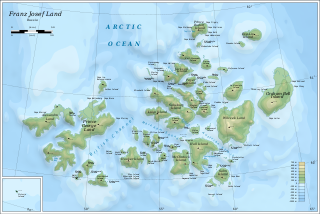Related Research Articles

Henry Hudson was an English sea explorer and navigator during the early 17th century, best known for his explorations of present-day Canada and parts of the northeastern United States.

Willem Barentsz, anglicized as William Barents or Barentz, was a Dutch navigator, cartographer, and Arctic explorer.

Sir Martin Frobisher was an English sailor and privateer who made three voyages to the New World looking for the North-west Passage. He probably sighted Resolution Island near Labrador in north-eastern Canada, before entering Frobisher Bay and landing on present-day Baffin Island. On his second voyage, Frobisher found what he thought was gold ore and carried 200 tons of it home on three ships, where initial assaying determined it to be worth a profit of £5.20 per ton. Encouraged, Frobisher returned to Canada with an even larger fleet and dug several mines around Frobisher Bay. He carried 1,350 tons of the ore back to England, where, after years of smelting, it was realized that the ore was a worthless rock containing the mineral hornblende. As an English privateer, he plundered riches from French ships. He was later knighted for his service in repelling the Spanish Armada in 1588.
William Baffin was an English navigator, explorer and cartographer. He is primarily known for his attempt to find a Northwest Passage from the Atlantic to the Pacific, during the course of which he was the first European to discover Baffin Bay situated between Canada and Greenland. He was also responsible for exceptional surveys of the Red Sea and Persian Gulf on behalf of the East India Company.

James Weddell was a British sailor, navigator and seal hunter who in February 1823 sailed to latitude of 74° 15′ S—a record 7.69 degrees or 532 statute miles south of the Antarctic Circle—and into a region of the Southern Ocean that later became known as the Weddell Sea.
Martin Pring (1580–1626) was an English explorer from Bristol, England who in 1603 at the age of 23 was captain of an expedition to North America to assess commercial potential; he explored areas of present-day Maine, New Hampshire, and Cape Cod in Massachusetts. In the process, he named what is now Plymouth Harbor 'Whitson Bay' and a nearby hill 'Mount Aldworth' after the two Bristol merchants who provided him with ships and supplies. The harbour was later renamed by the Pilgrim fathers.
The Company of Merchant Adventurers to New Lands was an early joint stock association, which began with private exploration and enterprise, and was to have been incorporated by King Edward VI in 1553, but received its full royal charter in 1555. It led to the commencement of English trade with Russia, Persia and elsewhere, and became known informally, and later formally, as the Muscovy Company.
John Biscoe was an English mariner and explorer who commanded the first expedition known to have sighted the areas named Enderby Land and Graham Land along the coast of Antarctica. The expedition also found a number of islands in the vicinity of Graham Land, including the Biscoe Islands that were named after him.

Mercator Cooper was a ship's captain who is credited with the first formal American visit near Edo, Japan and the first formal landing on the mainland East Antarctica.
Nicholas Woodcock was a 17th-century English mariner who sailed to Spitsbergen, Virginia, and Asia. He piloted the first Spanish whaling ship to Spitsbergen in 1612 and participated in the Anglo-Persian sieges of Kishm and Ormus in 1622.
Thomas Marmaduke was an English explorer, sealer, and whaler in the early 17th century.
Jonas Poole was an early 17th-century English explorer and sealer, and was significant in the history of whaling.
Thomas Edge was an English merchant, whaler, and sealer who worked for the Muscovy Company in the first quarter of the 17th century. The son of Ellis Edge, Thomas Edge was born in the parish of Blackburn in Lancashire in 1587/88. Edgeøya takes its name from him. Edge's Point, the eastern point of Recherche Fjord, also commemorated his name, but is now known as Lægerneset.

Willem Cornelisz. van Muyden was an early 17th-century mariner. He is known in the Netherlands as De Eerste Walvisvanger (1613). Van Muydenbukta and Van Mijenfjorden on the west coast of Spitsbergen and Kapp Muyen on the west coast of Jan Mayen are named after him.

Captain John Dibbs was a master mariner prominent during 1822–1835 in the seas around the colony of New South Wales, New Zealand and the Society Islands. Dibbs was master of the colonial schooner Endeavour 1822–1824, the brig Haweis 1824–1827 and the barque Lady Blackwood 1827–1834. He is credited as the European discoverer of Rarotonga and several other islands. Most of his voyages involved the transporting of missionaries, trade, whaling and seal hunting. He was believed for over 170 years to have disappeared at sea in 1835. He was the father of Sir George Dibbs, a pre-Federation Australian politician, Sir Thomas Dibbs, an Australian banker, and John Campbell Dibbs, a successful Sydney businessman.
Matthew Brisbane was a Scottish mariner, sealer and notable figure in the early history of the Falkland Islands.

Franz Josef Land, an uninhabited archipelago located in the Arctic Ocean, Barents Sea and Kara Sea, may have been discovered by the 1865 expedition of the Norwegian sealing vessel Spidsbergen captained by Nils Fredrik Rønnbeck. However, the discovery was never announced and the existence of the territory only came to public notice following the Austro-Hungarian North Pole Expedition of 1872, which named the archipelago in honor of Franz Joseph I of Austria. Benjamin Leigh Smith led the next expedition in 1880, which continued the work of the first expeditions in investigating the southern and central parts of the archipelago. Concurrent expeditions followed in 1896, Nansen's Fram expedition and the Jackson–Harmsworth Expedition, which met by accident. These two journeys explored the northern area and the flanks of Franz Josef Land.

Rifleman was a Cruizer-class brig-sloop launched in 1809 for the Royal Navy. She served in the North Sea, on the Halifax and Jamaica stations, and in the Mediterranean Sea. During her service she recaptured a Royal Navy vessel in Danish service, and two privateers. The Navy sold her in 1836 and she proceed to sail as a merchantman and whaler between 1837 and 1856.

Watts' West Indies and Virginia expedition also known as the Action of Cape Tiburon was an English expedition to the Spanish Main during the Anglo–Spanish War. The expedition began on 10 May and ended by 18 July 1590 and was commanded by Abraham Cocke and Christopher Newport. This was financed by the highly renowned London merchant John Watts. The English ships intercepted and dispersed Spanish convoys capturing, sinking, and grounding many ships off the Spanish colonies of Hispaniola, Cuba, and Jamaica. Despite losing an arm, Newport was victorious and captured a good haul of booty. A breakaway expedition from this discovered that the Roanoke Colony was completely deserted and which gave the name The Lost Colony.
John Balleny was the English captain of the sealing schooner Eliza Scott, who led an exploration cruise for the English whaling firm Samuel Enderby & Sons to the Antarctic in 1838–1839. During the expedition of 1838–1839, Balleny, sailing in company with Thomas Freeman and HMS Sabrina, sailed into the Southern Ocean along a corridor of longitude centering on the line of 175°E., south of New Zealand.
References
- Purchas, S. (1625). Hakluytus Posthumus or Purchas His Pilgrimes: Contayning a History of the World in Sea Voyages and Lande Travells by Englishmen and others. Volumes XIII and XIV (Reprint 1906, J. Maclehose and Sons).